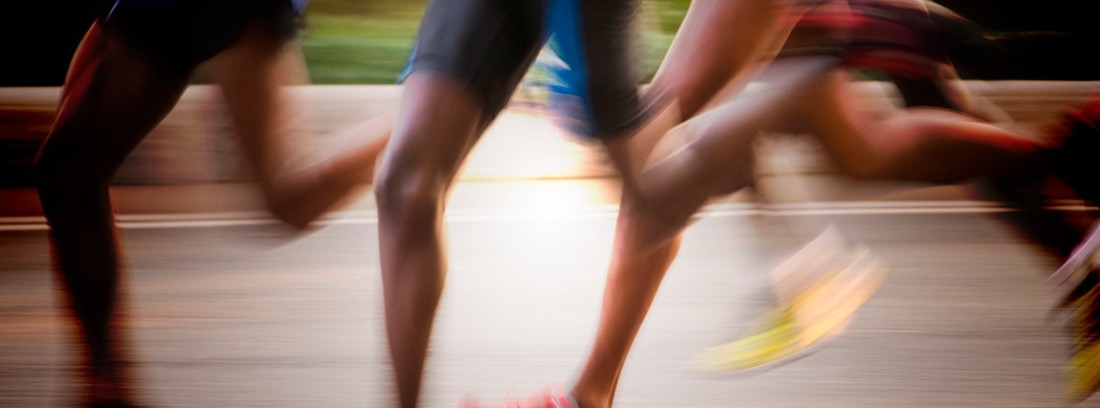Gels in sport: Recommendations and advice
 WHAT YOU NEED TO KNOW ...
WHAT YOU NEED TO KNOW ...
- To be an ally in competitions, it is best to try several gels during training, never on the same day of the test.
- It is advisable to take them with water and slowly so that they are digested well and do not cause digestive discomfort that interferes with exercise.
- The athlete's diet is essential to help him improve performance and achieve his goals, so it is good to ask the specialist for advice.
1- Gels are a highly concentrated source of carbohydrates
Between 65-70% they provide between 25 and 35 g of hydrates, they are presented in a gel texture and therefore are easy to digest and consume. They can vary in taste, quantity, concentration, type, mixture of carbohydrates and the presence of other "active" ingredients such as electrolytes, caffeine ... Their different compositions will make them more suitable to be used during or after training / competitions, according to needs. individual.
2- Better to take them in long activities
Gels, like sports drinks, are recommended to be used during training sessions or competitions lasting more than 60-70 minutes, or if the duration is shorter but the previous meal has been insufficient. During exercise, between 30-60 grams of per hour of activity should be consumed. In this sense, the gel will provide a good source of carbohydrates.
3- The gels should be taken very slowly
They are products extremely concentrated in sugars and salts, they provide a large amount of energy in little weight and volume, for this reason they are ideal to carry, but they are a double-edged sword if not taken correctly. If they are consumed quickly, the digestive system receives a highly concentrated semi-liquid with a high osmolarity that can cause vomiting since the stomach does not tolerate it, or it may happen that it reaches the intestine and it is forced to increase the concentration of water in order to digest it. and absorb it, which it can cause.
Tip: They should be taken in small sips, so that the nutrients pass slowly into the digestive system and are absorbed more gradually. Thus, the sugars will pass slowly into the blood and reactive hypoglycemia will be avoided. It should take at least 5-10 minutes to take it.
4- The gels, always accompanied by water
They should not be taken with isotonic drinks, since these are also formulated to provide the maximum amount of carbohydrates tolerable by the digestive system. If a product even more concentrated in sugars such as a gel is added to this, digestive discomfort is assured. As a general rule, a gel will be consumed with 300 to 500 cc of water.
5- The gels should always be tried in training
When the digestive system is trained, it takes a backseat, the blood is concentrated in the muscles, so the digestive system may have a harder time digesting certain foods or beverages than it would perfectly tolerate under resting conditions. For this reason, the body must get used to assimilating fluids and food during workouts, if you have never eaten or drunk while exercising, it is likely that discomforts such as flatus, cramps ... Food and hydration should also be trained. The gel should never be tried on the same day as the competition.
6- Not all gels feel the same to everyone
Each athlete is different and must be proving what suits him best and which brand he likes the most or assimilates the best. Sometimes we trust the brand that a partner who trains at the same level has done well or the brand sponsoring the event, and we do not carry out tests prior to the competition. Having tried one gel does not mean having tried all of them. Not worth the risk, try each one individually. Did you know…
The insurances include a Nutritional Advice service carried out by specialists in Nutrition and Sports Medicine.
(Updated at Apr 14 / 2024)